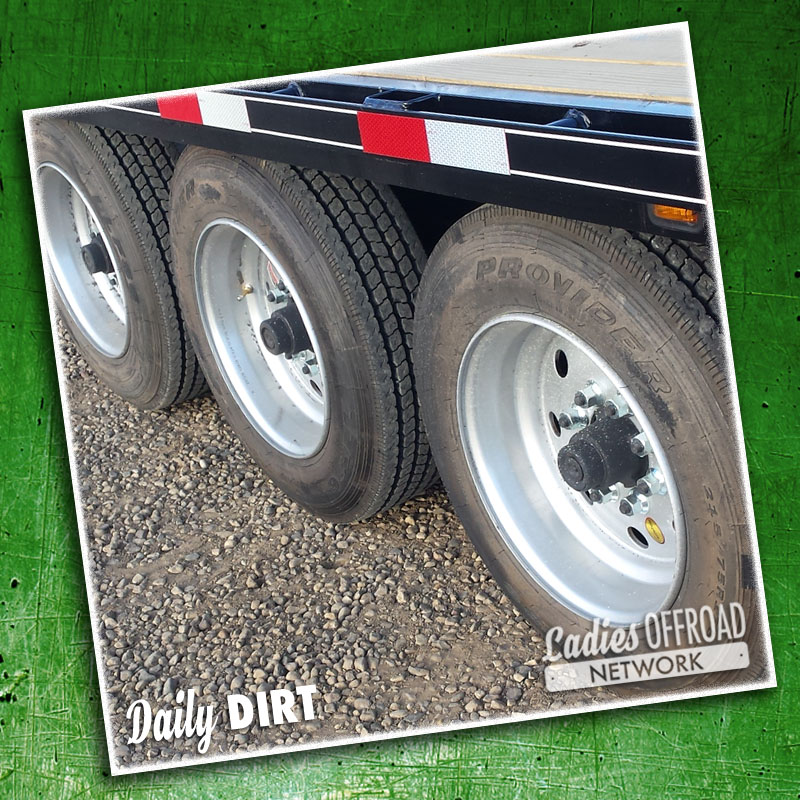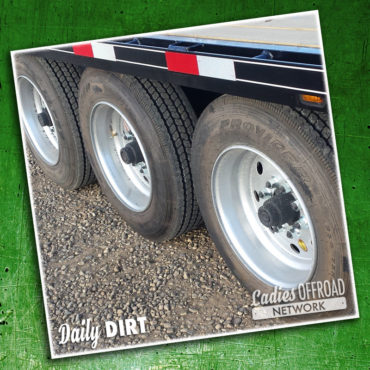 Some tires are specially designed to be used on trailers. These tires include the letters "ST" in the size specification that is listed on the sidewall. The "ST" stands for "special trailer". This kind of tire has a stronger sidewall than an automobile or truck tire so it can handle higher air pressures and higher loads.
Some tires are specially designed to be used on trailers. These tires include the letters "ST" in the size specification that is listed on the sidewall. The "ST" stands for "special trailer". This kind of tire has a stronger sidewall than an automobile or truck tire so it can handle higher air pressures and higher loads.
Trailer Tire Basics
Trailer tires aren’t like auto or light truck tires. They don’t steer, transmit power from an engine to the road or swerve to avoid obstacles. Automobile tires perform all of these functions, so they need flexible sidewalls to keep their tread anchored to the pavement. Car tires are mated to sophisticated suspension, steering and braking systems, while free-spinning trailer tires sit underneath stiff suspensions, and smaller trailers don’t have brakes at all. Ultimately, using automobile tires on your trailer is a safety issue, which is why the experts at the tire companies do not advise their use.
Special Trailer (ST) tires are designed for your trailer’s requirements. Their stiff sidewalls help prevent your rig from swaying. Their heavy-duty load capacity is critical; ST tires have 10% more load capacity than equivalent light truck (LT) tires, and 40% more than passenger car (P) tires. They’re designed for trailer wheels, typically narrower than those on a car, and have shallower treads, so they wiggle less, help improve your tow vehicle’s fuel economy and run cooler.
ST Tire Pressure
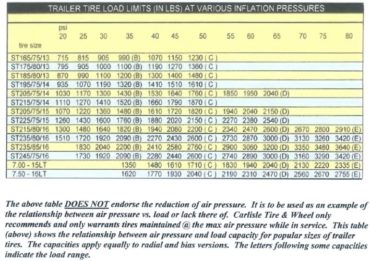 Special trailer tires should be inflated to their maximum air pressure. The value for the maximum air pressure should be listed along with the value for the maximum load on the tire's sidewall. These values will usually designate the maximum load at a maximum psi. For example, if the tire is rated at 1,610lbs maximum at 65 psi, the tire can carry 1,610lbs of weight if the air pressure is at the maximum of 65 psi. At the maximum air pressure, the tires will perform and wear best, and get the best gas mileage.
Special trailer tires should be inflated to their maximum air pressure. The value for the maximum air pressure should be listed along with the value for the maximum load on the tire's sidewall. These values will usually designate the maximum load at a maximum psi. For example, if the tire is rated at 1,610lbs maximum at 65 psi, the tire can carry 1,610lbs of weight if the air pressure is at the maximum of 65 psi. At the maximum air pressure, the tires will perform and wear best, and get the best gas mileage.
If a trailer tire is inflated to a lower air pressure than the maximum, the amount of weight that the tire can carry will be reduced. If a heavier load is put on the trailer tire than what is recommended for that air pressure, the sidewall of the tire could heat up and cause the tire to fail.
You should always inflate your tires when they are cold.
Under-Inflation and Overloading
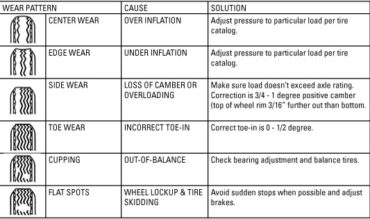 Under-inflation is the prime cause of tire problems, and an under-inflated trailer tire won’t sag like your car’s tires, because of its stiff sidewall construction. We recently pulled into a gas station with our 21' boat and checked our pressure. Both tires looked perfectly normal, but our pressure gauge showed that one tire had only 15psi (instead of the rated 50psi), which would have quickly destroyed the tire. Don’t eyeball it! Check your tire pressure with a quality gauge.
Under-inflation is the prime cause of tire problems, and an under-inflated trailer tire won’t sag like your car’s tires, because of its stiff sidewall construction. We recently pulled into a gas station with our 21' boat and checked our pressure. Both tires looked perfectly normal, but our pressure gauge showed that one tire had only 15psi (instead of the rated 50psi), which would have quickly destroyed the tire. Don’t eyeball it! Check your tire pressure with a quality gauge.
If a tire is over-inflated, it will wear more in the center of the tread, all the way around the tire. If a tire is under-inflated, it will wear on the outside edges of the tread, all the way around the tire.
Speed Rating of ST Tires
Special trailer tires have a maximum speed rating, just like passenger cars and truck tires. Older tires have no special marking to designate a limit. Their maximum speed is 65 mph. Newer Tires, those manufactured in 2015 and later, should have one of the following codes on the sidewall to show their rating:
M - 81 mph
L - 75 mph
J - 62 mph
Note: If a trailer tire has any other marking to designate maximum speed rating, follow it.
Oxidation, Not Tread Wear
According to rubber industry research, trailer tires need to be replaced after 3-5 years of use, even though they usually appear to have plenty of tread left. Unlike your car’s tires, it isn’t miles of driving but oxidation of the rubber that wears out the tire. Mostly, a trailer tire sits in one spot for days or weeks at a time and may travel only 10,000 miles (or sometimes a lot less) per year. UV radiation from sunlight and ozone from exhaust cause exterior damage to the sidewalls and oxygen from pressurized air creates unseen damage deep inside.
Radial or Bias Ply Tires
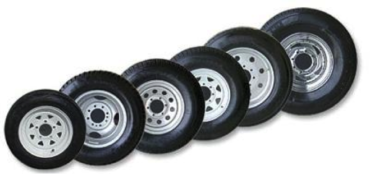 Radial tires have plies that run perpendicularly across the tire and belts (often made of steel) running below the tread around the tire’s circumference. Bias ply tires have their plies running at 30° angles (like the stripes on a candy cane). Most motorists believe radials are better (and they are for your auto). Should you buy them for your trailer?
Radial tires have plies that run perpendicularly across the tire and belts (often made of steel) running below the tread around the tire’s circumference. Bias ply tires have their plies running at 30° angles (like the stripes on a candy cane). Most motorists believe radials are better (and they are for your auto). Should you buy them for your trailer?
The answer depends on your trailer’s handling. Bias ply tires have stiffer sidewalls, so if your rig tends to sway, they may help reduce this problem. They also have advantages for carrying heavy loads. Radials, as most of us know, are vastly superior for tread wear. They’ll last an average of 40,000 miles vs. 12,000 for bias plies. However, oxidation, not tread wear, wears out trailer tires. Radial tires are also less prone to developing flat spots on one side when they are parked in the same position for weeks at a time and tend to run cooler on long trips. Bottom line: consider your trailer’s handling and the manufacturer’s recommended tire type. If you travel long distances and/or put lots of miles on your tires every year, radials are worth the extra cost.
Each of your trailer’s tires should be the same type, size, and construction—do not mix bias-belted and radial tires. In selecting tires for your trailer, buy the size, type, and load range found on the trailer’s certification label or in the owner’s manual. Keep in mind that tires have a load rating that indicates the amount of weight they can carry safely. That includes toys, Igloo coolers and camping gear. Overloading can lead to a large heat buildup, causing accelerated wear or a blowout.
Trailer Tire Safety Tips
-
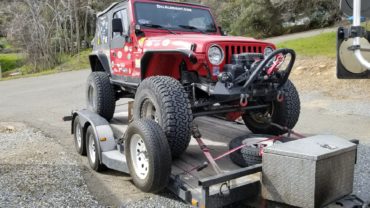
Del Albright, Blue Ribbon Coalition
Maintain pressure at the maximum PSI recommended on the tire’s sidewall for cool running, load-carrying ability and lowest rolling resistance. - Keep a cap on the valve stem to prevent contamination of its internal rubber valve.
- Always carry a spare and check its pressure along with your trailer’s other tires.
- Don’t overload trailer tires. Maximum load is listed on the sidewall. Single axle tires can handle 100 percent of their rated load. Dual axle tires must have their loads reduced by 12 percent below the rated amount.
- Visually inspect your tires before each trip. Check the pressure before you use your trailer. On long trips, you should check your tires’ pressure every morning when the tires are cold.
- For long-term storage: cover your tires for UV protection or keep them in a cool, dry place.
- Replace every three to five years, regardless of tread wear.
Author: Jennifer Chapin
Share with your Friends on Facebook:
Share with your Friends on Instagram:
Share with your Friends on Pinterest:


